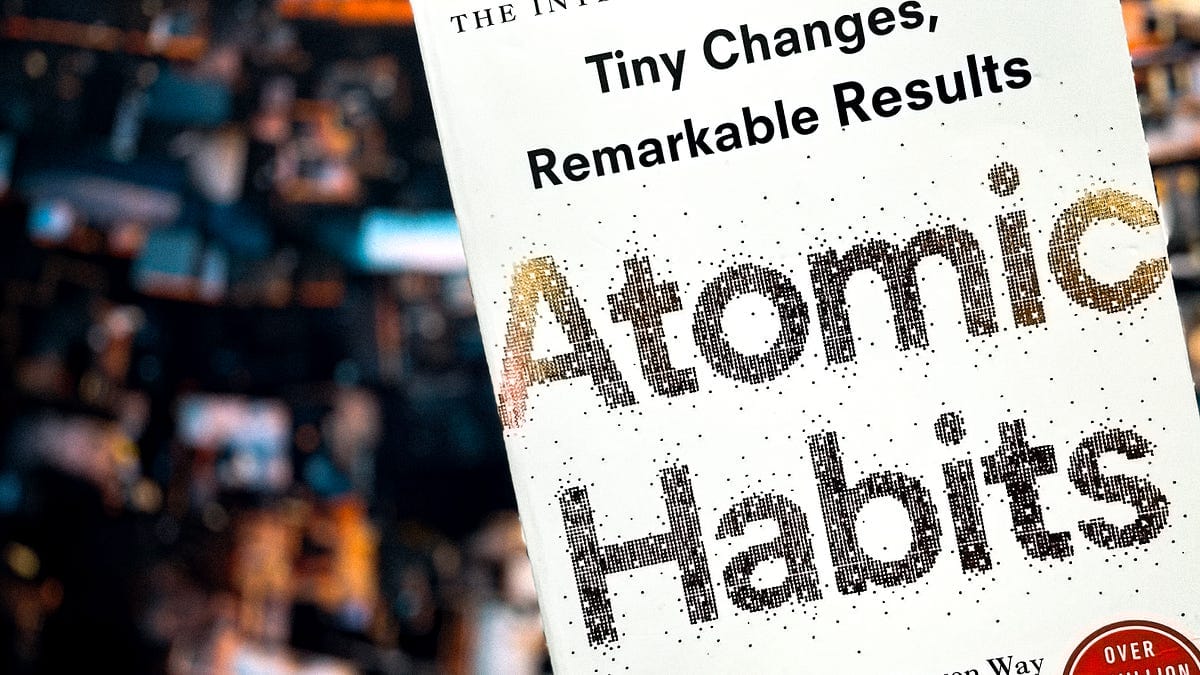Your First Step in Building a Habit
On What I Read — Log #4 | Atomic Habits by James Clear

I’ve always enjoyed writing. But something or another always led me to drop it. The same almost happened for my latest shot, as after 17–18 articles, I lost the motivation to keep writing. I always had this nagging feeling that I was not writing an article, but things looked daunting.
I hid away from the feeling and continued writing an article once or twice a month. But now, things are different. I decided to write daily. What will I write? About the things I read.
I’ve read the “theory” on how atomic habits are important, how identity is important for a habit to stick, and the four steps in building a habit. Yet, things, despite being interesting, have set up the foundations required to build on top of them.
However, there’s one key that was left behind. We must first know what we’re changing if we must change something. Identifying the problem is a problem half-solved, after all. The same law applies to habits. We’ve been doing things the same way for years now. If we have to change ourselves and how we live, we must identify the good and bad things we have been doing till now.
The Japanese framework to identify mistakes.
That’s interesting because the book shares two main ways, which are the same in a different medium. We first examine how the conductors and staff at the Japanese railway system point to everything and shout it out loud before starting the train. The author has explicitly seen how a woman’s life was saved because of the simple and childish procedure.
Tweaking it to work for your habits.
Yet, when the same thing is applied in our day-to-day lives, it makes an unignorable difference. As usual, I started my morning walk this morning, but I was about to quit it in the middle as I had a bad sleep. But I tried out pointing and calling out what I was doing. Of course, I was embarrassed to shout in a park where other people might be listening, yet I had nothing to lose. So, I just shouted, “I have been trying to make walking a habit for years now, and now things are on track. But I want to quit today’s walk because I couldn’t sleep well yesterday.”
This made me realise the gravity of what I was doing. I have wanted a walking or exercise routine for years, and I have hated myself for being unable to do it. And now, I wanted to return to my old ways just because I hadn’t slept enough. This might not end my walking habit, but I know myself better. Once I use an excuse to escape one day’s work, I’ll use the same excuse and quit the thing entirely.
This might be an identity issue, and I am changing it because I realised I see myself like this. And how can I change it? By continuing to walk. That’s what I did. This point-and-shout approach might not seem useful, but this is the approach that has reduced railway accidents by a significant 35% and errors in railway systems by 85%. The power is not to be
The quiet version
There’s another variation for your habits, though: you need not point and shout at your habit. You can list all the habits you noticed in yourself and rate them as good, bad, and neutral. You can make a rating system way more complex than this, but you need to realise that simple things have more impact. Don’t focus on unnecessary details and get things done.
That’s the simple advice: identify and accept our habits before forcing yourself to add a new one. But how do we integrate a new one into our daily lives?
Integrating habits — The Implementation Intention
I learned today about research at a university in Great Britain, where researchers split people who wanted to run into three categories. The first group was supposed only to track their runs, the second group was given some motivation to run while tracking their runs, and the third group was asked about the exact time and place where they’d run. Long story short, the third group was the most successful in running once a week compared to the first two groups.
This shares an interesting detail: rather than implementing something in the future, deciding a time and place has pushed more people to do that. Why? There was more clarity for people to work with. They had already prepared their minds and were more likely to act on their plans. This is called “implementation-intention”.
There are many ways to integrate this into our daily lives, but one of the simplest ones(as shared by the author, and I have no research experience, so I have to accept it.) is the “Habit-stacking” approach. What this suggests is simple: use one habit as a cue for another.
What does this using as a cue mean? Well, use the habits that you do every day and attach the new habit to them. For example, whenever I close my work laptop, I journal my day, or whenever I return home, I place my shoes neatly. These are simple things, but when attached to another habit, it removes the uncertainty in making the habit. This is a simple but powerful framework, and it’s funny that it works.
How am I practising this?
My day starts with brushing my teeth. So that’s the first habit on the stack. Once I finish brushing my teeth, I go for a walk of 1 KM. After this, I return home, read the notes I had made the day before, and write an article. Then, I’d have a cup of coffee to finish the stack. Initially, I thought this wouldn’t work much, but after a week of continuously doing this, I believe this is an amazing way to implement habits.
That was everything I read today, and man, I never realised that it’s been 4 days since I started keeping this log. I enjoy this a lot and am happy to keep doing this every day. The habit-stacking is a surprisingly simple and useful framework. And many people I know are using this to make new habits.
What about you? Are you using this in your daily life? Please share it with me in the comments!
That’s everything I had to share for today. I hope you found something of value in this story. Thanks for sticking to the end.
Until next time–Happy Reading! ✌️


